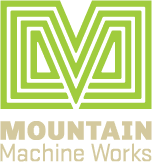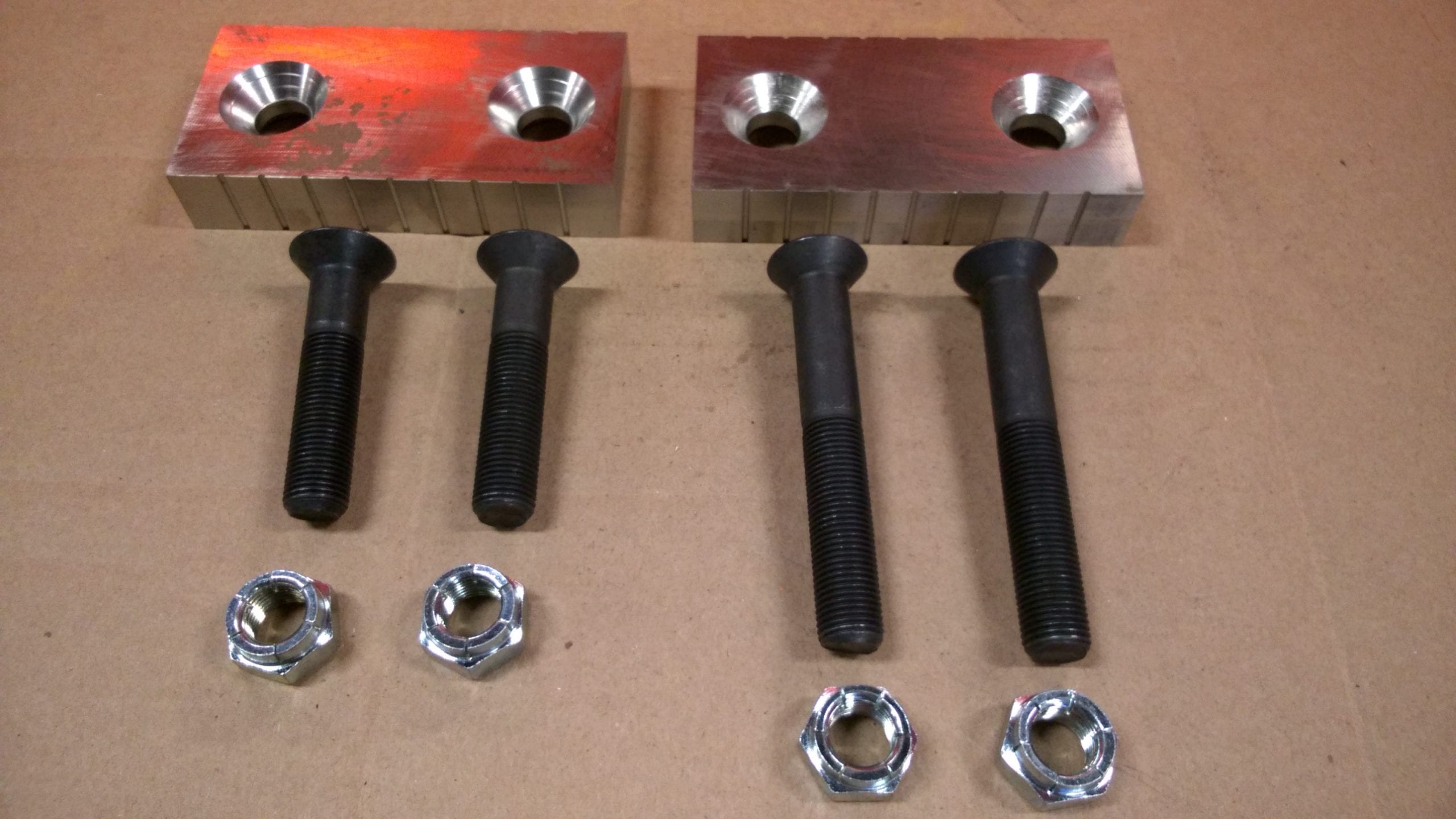Welcome to Mountain Machine Works! In this article, we will delve into the fascinating world of CNC machining and explore various examples of CNC-machined parts. From understanding the basics of CNC machining to discovering the industries that rely on this technology, we will cover it all. Additionally, we will discuss the five most common types of precision CNC machining and provide insights on how to choose the right material for your CNC machined parts. So, let’s embark on this journey to unravel the wonders of CNC machining!
What is CNC Machining?
CNC machining, short for Computer Numerical Control machining, is a manufacturing process that uses computerized controls to guide the movement of cutting tools and machinery. It allows for precise and efficient production of CNC parts and components by removing material from a solid block, resulting in highly accurate and complex geometries. This technology has revolutionized the manufacturing industry, enabling the production of intricate parts with minimal human intervention. CNC machining finds applications in various industries, ranging from automotive and aerospace to electronics and healthcare.
How Does CNC Machining Work?
CNC machining involves several steps to transform a digital design into a physical part. Here’s a simplified overview of the process:
- Design: A 3D model of the desired part is created using computer-aided design (CAD) software. The design specifies the dimensions, shapes, and features of the part.
- Programming: The CAD file is converted into a CNC-compatible format using computer-aided manufacturing (CAM) software. The programmer defines tool paths, cutting parameters, and machine instructions.
- Setup: The CNC machine is prepared for production. This involves securing the workpiece on the machine’s bed or fixture, loading the required tools, and setting the cutting parameters.
- Machining: The CNC machine executes the programmed instructions to cut, drill, or shape the workpiece. The machine precisely moves the cutting tools along the specified paths, removing material as needed.
- Quality Control: Throughout the machining process, quality checks are performed to ensure dimensional accuracy and adherence to specifications. This may involve using measuring tools, such as calipers or coordinate measuring machines (CMMs).
- Finishing: Once the machining is complete, additional post-processing steps, such as deburring, polishing, or coating, may be performed to enhance the part’s surface finish and functionality.
Five Most Common Types of Precision CNC Machining
- Milling Machines: Milling is one of the most versatile CNC machining processes. It uses rotating cutting tools to remove material from a workpiece, creating complex shapes and features. Different types of milling machines, such as vertical milling machines, horizontal milling machines, and 5-axis milling machines, offer varying degrees of flexibility and precision.
- Turning Machines: Turning machines, also known as lathes, rotate the workpiece while a cutting tool shapes it into the desired form. This process is particularly suitable for cylindrical or tubular parts. CNC turning machines can produce symmetrical parts with excellent concentricity and surface finish.
- Drilling Machines: CNC drilling machines are used to create holes in the workpiece. They can perform various drilling operations, such as spot drilling, counterboring, and tapping. CNC drilling machines are efficient for batch production and can accurately position holes with high repeatability.
- Grinding Machines: CNC grinding machines are employed to achieve precise and fine surface finishes. They use abrasive wheels to remove material from the workpiece and refine its shape or dimensions. Grinding machines are commonly used for parts that require tight tolerances and smooth surfaces, such as bearings or engine components.
- Electrical Discharge Machining (EDM): EDM is a non-traditional CNC machining process that utilizes electrical discharges to erode material from the workpiece. It is ideal for machining conductive materials and producing intricate shapes that are challenging to achieve using conventional cutting methods. EDM can be further classified into wire EDM and sinker EDM, each offering unique advantages.
What Industries Use CNC Machining?
CNC machining is widely employed in various industries that require precision parts and components. Some of the key industries that heavily rely on CNC machining include:
- Automotive Industry: CNC machining plays a crucial role in the production of automotive parts, such as engine components, transmission parts, and chassis components. The high accuracy and repeatability of CNC machining ensure the reliability and performance of automotive systems. Parts: Engine blocks and cylinder heads, transmission gears and shafts, suspension components, brake system parts, steering system components.
- Aerospace Industry: The aerospace sector demands highly precise and complex parts for aircraft and spacecraft. CNC machining is used to manufacture components like turbine blades, engine mounts, landing gear parts, and structural elements. The ability to create intricate designs and meet strict tolerances makes CNC machining indispensable in this industry. Parts: Turbine blades and vanes, aircraft structural components, landing gear parts, wing components, engine mounts.
- Electronics Industry: The electronics industry requires small, intricate components with tight tolerances. CNC machining is utilized in the production of printed circuit boards (PCBs), connectors, heat sinks, and other electronic enclosures. It enables the fabrication of complex designs and ensures the accuracy necessary for proper electronic functionality. Parts: Printed circuit boards (PCBs), heat sinks and enclosures, connectors and terminals, housing for electronic devices, sensor components.
- Medical Industry: CNC machining is crucial in the medical field for manufacturing medical devices, surgical tools, implants, and prosthetics. The precise and sterile nature of CNC-machined parts makes them suitable for critical applications like orthopedics, dental implants, and surgical instruments. Parts: surgical instruments, Implants (e.g., hip or knee implants), prosthetics, dental components, medical device enclosures.
- Energy Industry: CNC machining finds applications in the energy sector for producing parts used in power generation, oil and gas exploration, and renewable energy systems. Turbine components, valves, pump parts, and heat exchangers are examples of CNC-machined parts used in this industry. Parts: turbine components (blades, nozzles), pump and valve bodies, heat exchangers, drilling equipment parts, renewable energy system components.
Common Types of Materials Used in CNC Machining:
The choice of material for CNC machined parts depends on factors such as mechanical properties, environmental conditions, and the specific requirements of the application. Some commonly used materials in CNC machining include:
Metals:
- Aluminum: Lightweight, corrosion-resistant, and offers good machinability.
- Stainless Steel: High strength, excellent corrosion resistance, and suitable for medical and food industry applications.
- Titanium: Lightweight, high strength, and excellent biocompatibility, commonly used in aerospace and medical applications.
- Brass: Good electrical conductivity, corrosion resistance, and often used for decorative or electrical components.
- Steel: Offers high strength, durability, and is suitable for various applications.
Plastics:
- ABS (Acrylonitrile Butadiene Styrene): Durable, impact-resistant, and widely used in consumer products and automotive applications.
- Nylon: High strength, excellent wear resistance, and commonly used for gears, bearings, and other mechanical parts.
- Polycarbonate (PC): Transparent, impact-resistant, and commonly used for safety glasses, electronic enclosures, and automotive parts.
- Polypropylene (PP): Lightweight, chemical-resistant, and widely used in packaging, automotive, and medical industries.
- Acrylic: Transparent, UV-resistant, and often used for displays, signage, and lighting applications.
How to Choose the Right Material for Your CNC Machined Parts
Selecting the appropriate material for CNC machined parts is crucial to ensure functionality, durability, and cost-effectiveness. Consider the following factors when choosing the material:
- Mechanical Properties: Identify the specific mechanical requirements of your part, such as strength, hardness, and impact resistance. Match these requirements with materials that exhibit the desired properties.
- Material Compatibility: Consider the environment in which the part will operate. Some materials may be susceptible to corrosion, extreme temperatures, or chemicals. Choose materials that are compatible with the intended application.
- Cost and Availability: Evaluate the cost-effectiveness of different materials, including material price, availability, and machining costs. Balance the desired performance with the budgetary constraints.
- Machinability: Different materials have varying levels of machinability. Some materials may be challenging to machine due to their hardness or heat resistance. Ensure that the chosen material is suitable for CNC machining processes.
- Industry Standards and Certifications: If your part needs to meet specific industry standards or certifications, select materials that comply with those requirements. This is particularly important in industries like aerospace and medical, where regulatory compliance is essential.
- Tolerance Requirements: Some materials offer superior dimensional stability, making them ideal for applications with strict tolerance requirements.
- Heat Resistance: Consider the part’s exposure to high temperatures and select materials that can withstand thermal stress without deformation or degradation.
- Corrosion Resistance: Evaluate the need for corrosion-resistant materials, especially for parts in contact with moisture, chemicals, or aggressive environments.
- Aesthetics: If appearance is crucial, choose materials that can be easily finished, painted, or textured to achieve the desired aesthetic appeal.
CNC machining is a remarkable technology that revolutionizes manufacturing processes across various industries. From aerospace and automotive to medical and electronics, CNC-machined parts are integral to numerous applications. By understanding the basics of CNC machining, exploring its applications, and learning about the common types of precision CNC machining, you are now equipped with valuable knowledge to appreciate the intricacies of this cutting-edge technology. Remember to consider the crucial factors when choosing materials for CNC machined parts, and Mountain Machine Works is here to assist you in achieving your manufacturing goals with precision and expertise.

